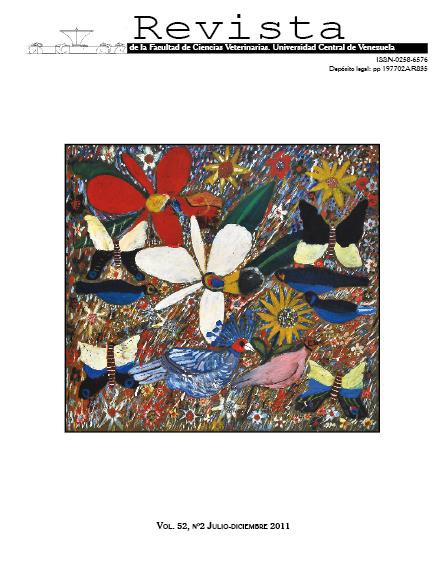Distribución y Abundancia de Piojos (Werneckiella equi) y Eficacia del Tratamiento con Triclorfón en Caballos Mestizos
Contenido principal del artículo
Resumen
El piojo masticador Werneckiella equi es un ectoparásito comúnmente encontrado en equinos; puede causar irritación, llevando a hiperqueratosis, prurito intenso y alopecia. Existen diversos productos en el mercado utilizados para el tratamiento de ectoparásitos; sin embargo, la información disponible sobre su efectividad es escasa. El objetivo de este estudio fue determinar la abundancia y distribución de W. equi y la eficacia de triclorfón en el control de los phthirapteras en caballos mestizos, utilizando una dosis única, aplicada mediante aspersión. Se utilizaron 34 caballos mestizos naturalmente infestados con piojos, que se distribuyeron al azar en dos grupos: Control (sin tratamiento; n=17) y Tratado con triclorfón diluido al 0,15% (n=17). La distribución y abundancia de los piojos fue estimada por medio de recuento directo de los phthirapteras en diferentes zonas del cuerpo del caballo, observándose solo diferencias significativas (P≤0,05) en la región de la mano con respecto a zona del abdomen y dorso lateral del tronco. La efectividad fue evaluada a los 28 días post-tratamiento, observándose diferencias significativas entre el grupo Control y Tratado, resultando en un porcentaje de eficacia del 93,5% y demostrándose que triclorfón aplicado al 0,15% muestra un efectivo tratamiento para piojos en equinos.
Abstract
The chewing louse, Werneckiella equi, is an ectoparasite commonly found in equine. This parasite may cause irritation, leading to hyperkeratosis, intense pruritus, and alopecia. There are several products in the market used in the treatment of ectoparasites; however, available information regarding their effectiveness is scarce. A study was undertaken to determine both the abundance and distribution of W. equi and the efficacy of trichlorfon (an organophosphate) in controlling the horse lice, using a single dose, employing the spray method. A total of 34 crossbred horses, naturally infested with lice were used. The animals were randomly distributed into two groups: Control group (without treatment; n=17); and Treatment group (n=17): animals treated with 0.15% w/v trichlorfon. The distribution and abundance of lice were determined by direct counting of phthiraptera in different areas of the horse body. The results show only minor significant differences (P≤0.05) in the hand region, when compared to the abdomen and the dorso-lateral trunk. The efficacy was evaluated 28 d post-treatment, showing significant differences between the two groups, being the treatment efficacy of 93.5%. It is concluded that trichlorfon, when applied as a 0.15% w/v spray, results in an effective treatment for equine lice.

